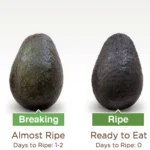Fermenting chicken feed is a process that has been gaining traction among poultry enthusiasts for its undeniable health benefits. By leveraging the power of lacto-fermentation, chicken feed becomes more nutritious and digestible, leading to happier and healthier flocks. If you’ve been considering this method for your own chickens, understanding the process and its advantages is essential.
How to Ferment Your Own Chicken Feed?
Fermenting chicken feed is surprisingly simple. Begin by choosing a high-quality feed and soaking it in dechlorinated water. The ratio of feed to water should allow for the feed to be fully immersed. Leave the mixture in a warm place for 2-4 days, and you’ll notice bubbles and a tangy smell indicating successful fermentation.
It’s important to use a container that allows the feed to breathe. A simple bucket with a loose lid will suffice. Stir the mixture daily to prevent mold and ensure even fermentation. After a few days, your fermented chicken feed is ready to serve to your chickens.
Remember to offer fresh feed each day and remove uneaten portions to maintain hygiene and prevent spoilage. Adjust the quantity as per your flock’s consumption to avoid waste.
What Is Lacto-Fermentation and How Does It Work?
Lacto-fermentation is a natural preservation process that enhances food with probiotics, beneficial enzymes, and increased vitamin levels. The process involves beneficial bacteria, such as Lactobacillus, converting sugars and starches into lactic acid.
This lactic acid acts as a preservative, inhibiting the growth of harmful bacteria. During fermentation, the feed’s nutrients become more bioavailable, meaning your chickens can absorb them more efficiently.
Furthermore, the acidic environment of fermented feed promotes gut health, enhances the immune system, and improves the overall well-being of your chickens.
Why Should You Ferment Your Chicken Feed?
Fermenting chicken feed offers numerous benefits, including improved digestion and nutrient absorption. This results in healthier chickens with stronger immune systems and better egg production.
Moreover, fermented chicken feed can help reduce feed costs as chickens tend to eat less due to improved satiety from the nutrient-rich feed. Additionally, it can reduce dependency on commercial probiotics and supplements.
It’s a sustainable choice as well, with less feed waste and healthier chickens translating to a more environmentally friendly and cost-effective poultry keeping.
What Are the Benefits of Fermented Chicken Feed?
Increased nutrient absorption and gut health due to beneficial bacteria.
Enhanced immune function, leading to a reduction in diseases.
Improved eggshell strength and egg taste.
Reduction in feed costs and less waste.
Environmentally friendly practice by reducing the carbon footprint of your poultry keeping.
How Long Should You Ferment Chicken Feed?
The optimal fermentation time can vary, but generally, it takes about 2-4 days. You should look for signs of fermentation such as a sour smell and bubbles on the surface.
During warmer seasons, the process may be quicker, while in cooler temperatures, it might take a bit longer. It’s crucial to observe the feed and trust your senses to avoid over-fermentation, which could lead to mold and spoilage.
Once the feed has a pleasant tangy smell and is slightly bubbly, it’s typically ready to be served to your chickens. Always check for mold or an off smell, as these are indications that the feed has gone bad.
What Is the Best Fermented Food for Chickens?
Grains such as wheat, oats, barley, and rice make excellent options for fermenting. These grains provide a balanced nutritional profile and ferment well. You can also ferment commercially prepared feeds, including pellets and crumbles, to enhance their nutritional value.
However, it’s best to avoid fermenting feeds high in fats, such as those containing fish meal or flaxseed, as they can turn rancid during the fermentation process.
Can You Ferment Crumble Chicken Feed?
Yes, crumble feed can be fermented just like whole grains or pellets. While the texture may change and become more porridge-like, the nutritional benefits remain the same. Ensure you stir the crumble feed carefully during fermentation to prevent it from clumping together.
Keep in mind that the fermentation process might be slightly different for crumbled feed due to its increased surface area, which can lead to quicker fermentation times.
Related Questions on Fermented Chicken Feed
Why Would You Want to Ferment Chicken Feed?
Fermenting chicken feed increases its nutritional value, makes it easier for chickens to digest, and promotes a healthy gut. It’s a natural way to boost your flock’s health and reduce feed costs over time.
Additionally, fermented feed can help decrease the incidence of diseases within your flock by outcompeting harmful bacteria in your chickens’ digestive systems.
How to Properly Ferment Chicken Feed?
To properly ferment chicken feed, maintain a clean environment, use dechlorinated water, and ensure that the feed is fully submerged. Stir daily, and once fermentation begins, feed it to your chickens and remove any uneaten feed promptly.
How Long Should You Ferment Chicken Feed?
Fermenting chicken feed typically takes 2-4 days. The key is to observe the signs of fermentation, such as a sour smell and bubbles, and to ensure that the feed does not spoil or develop mold.
What Is the Best Fermented Food for Chickens?
The best fermented foods for chickens are grains like wheat, oats, and barley. These provide a rich source of nutrition and ferment easily. Avoid high-fat feeds to prevent rancid fermentation.
For a visual guide on how to ferment chicken feed, check out this informative video:
Incorporate these practices, and you’ll see significant improvements in your chickens’ health and egg production. Embrace the simplicity and efficacy of fermenting chicken feed and unlock the potential of your poultry farm.







